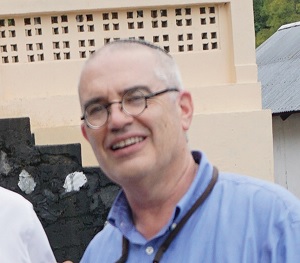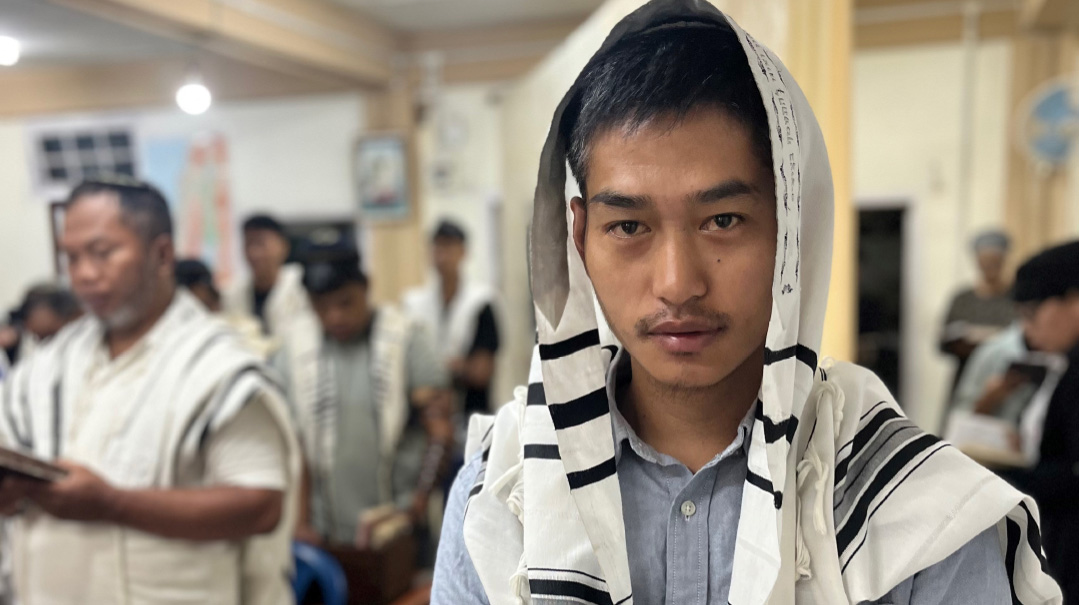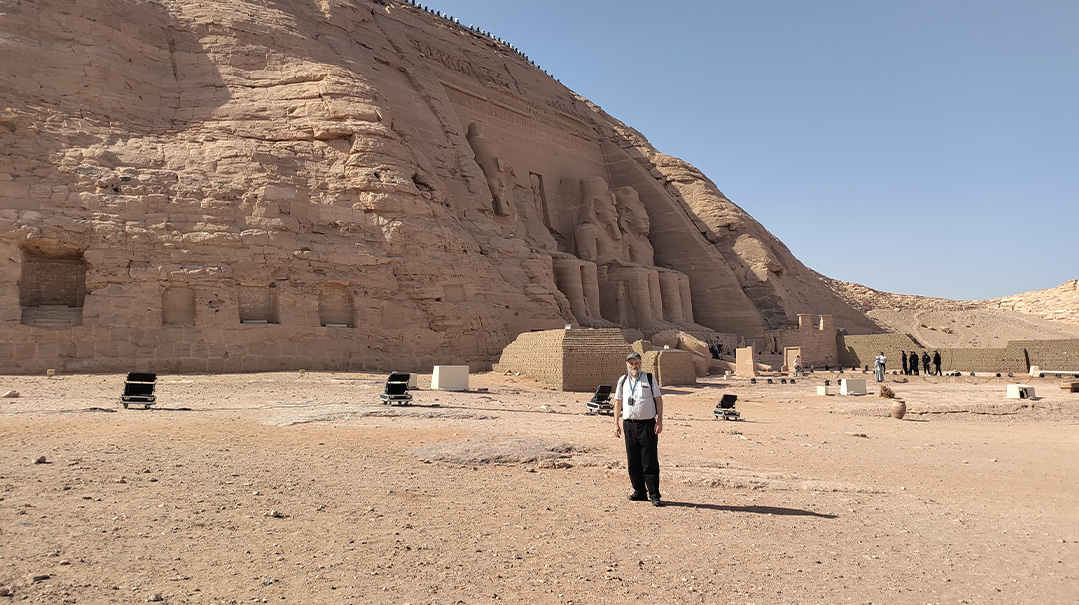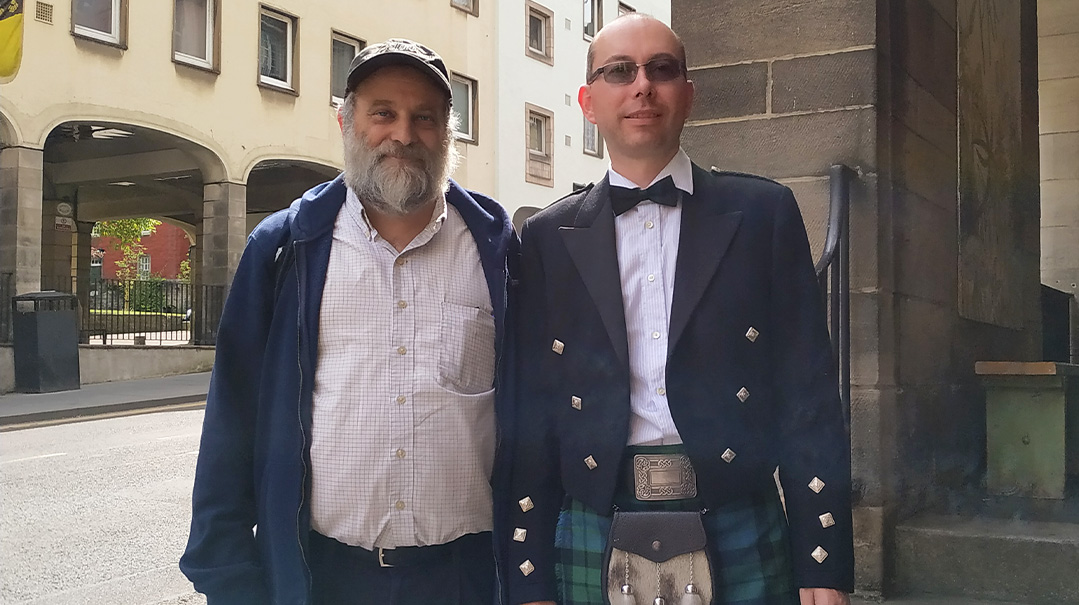Pashtun Pride



In recent years you may have seen sensationalist headlines proclaiming that the Taliban (and by extension bin Laden) are descended from the Jewish People. Well, bin Laden was actually an ethnic Yemenite from Saudi Arabia; and the Taliban? It’s not them per se, but the tribe they come from, that some researchers have put under the microscope in a quest to resolve the historical mystery of linkage to the Ten Lost Tribes. Do the Pashtuns, or Pathans — mostly living in an Islamic world — really have ancient Israelite roots as they claim?
Although most of the Pathans live in Afghanistan and Pakistan, regions where even we are not currently willing to venture into, a small subset of them have lived in India for the last several hundred years. And thus, we think, they’re worthy of a visit, especially since many of them hang onto a tradition that they are “Bani Israel,” descendants of the Lost Tribes of Israel.
One of the most public researchers in this field is himself a Pathan, Dr. Navras Jaat Aafreedi, an assistant professor in India who did postdoctoral research on the subject at Tel Aviv University. He has published several impressive studies on the Pathans and was extremely helpful as we planned our visit to northern India. Although unable to personally join us on our excursion, he put us in touch with several other Pathans and requested that they guide and translate for us, which they generously did.
The Pathans (the terms Pathans, Pashtuns, Pakhtuns, and Afghans are used interchangeably), who are today overwhelmingly Sunni Muslims, are often described as a warlike people, divided into 60 different tribes comprising 400 clans. While there are tens of millions of Pashtuns in Pakistan and Afghanistan, there was a small migration to India from the 13th century through the early 19th century, during which time the Pathans were employed by the sultans of Delhi and the Mughal emperors.
Having limited time, we planned to visit one center of Pathan settlement, the small town of Malihabad, which is about an hour’s drive from the regional capital and airport of Lucknow. Of the 16,000 residents in Malihabad, about half are Pashtun Muslims of the Afridi tribe. The greatest wave of Afridi Pathans arrived about 250 years ago led by Faqeer Muhammad Khan, alias Goya Malihabadi, who led the tribe out of their native land by horseback in search of wealth on the Afghani-Hindustan border. It wasn’t long before the nawab (ruler) of Lucknow heard of their fencing and equestrian skills and invited Malihabadi to his region, where he rose to become commander-in-chief of the nawab’s army. Falling in love with the fertile region, Malihabadi planted fruit trees, including mangoes, and planted his family roots too, resulting in a sizable Afridi Pashtun presence in the region.
We had our first surprise when we looked at the morning edition of the leading Indian English-language newspaper, the Times of India, the day prior to our visit. There, on the front page, was an article entitled “Seeking Malihabad’s Jewish connection,” describing our planned visit. The article noted, correctly, that we were not the only ones interested in the ancient roots of the Pashtun. It pointed out that “Jewish scholars from the far off land of Israel have been guests to Malihabad over the years.”
Those guests, and others, were curious to discover the truth about rumors they’d been hearing: that the names of Afghani tribes are similar to those of the Ten Tribes of Israel (Rebbani, Levoni, Afridi, Yusufzai, and Ghaghi might correspond to Reuven, Levi, Ephraim, Yosef, and Gad); that the Pathans are strict about not shaving their sidelocks, that they wear four-cornered garments with fringes, and that they light candles on the eve of their Sabbath. Is it true? Would we see evidence of these Jewish motifs? We couldn’t wait to find out.
Mango Madness
Upon exiting the Lucknow airport, we were greeted by our hosts for the day, Asad Yar Khan, Ahsan Javed, and Mohd Wadoodul Hasan Usmani. Asad and Ahsan are both Afridi Pashtuns, and Ahsan has a farm where we would be meeting other tribesmen. While we were a little apprehensive about being driven alone into the Muslim town, hearing the local news gave us other worries. Our hosts were alerted that a wild tiger was currently loose in the area. While stumbling on the beast might have added some excitement to our excursion, we’re glad we didn’t see it during our visit.
Whatever our Muslim hosts felt about Jews, Israel, or us personally, was irrelevant — we were guests and they were hosts and they treated us as such, even treating us to a tour of the town’s important sites. They are extremely proud of their heritage and the first stop was to meet a scion of one of the region’s founding families who had come from Afghanistan around 1750. His farmhouse, surrounded by numerous fruit trees and a few livestock, offers a beautiful pastoral setting. Many of the local Pathans are landowners with sprawling mango plantations that employ local Hindu workers. These vast groves provide them with a calm, leisurely life. Of course, our host gave us several different types of fruit as gifts.
For the locals, the major attractions are the mango orchards. The Malihabad region is world-renowned for its mangoes, in particular the Dussehri mango (we’d never heard of it). For the uninitiated (as we were), there are many varieties of mango, including Chausa, Langda, Safeda — but Dussehri is the king of mangoes. The fruits ripen between May and July and thus during our mid-winter visit we saw only barren trees — but that didn’t prevent the proud farmers from showing off their handiwork. Not only is the region ideal for growing the fruit, but the Malihabad Pathans have perfected the art of grafting one type of mango onto another in order to produce trees that yield multiple types of fruit and are more productive. They are immensely proud of the quantity and quality of their mango and, despite their stated antipathy toward the Zionist state, several times requested our assistance in facilitating export of their produce to Israel.
Lost and Found
The Pashtuns take extreme care of their genealogical records, called shijra. For example, a number of medieval Persian texts document the Pathan tradition that they are descended from Kish or Qais, their ancient king, who was a contemporary of Mohammed and is claimed to be the 37th direct descendent of Shaul Hamelech through Pison, Shaul’s great-grandson (as mentioned in I Divrei Hayamim 8:35). Of course the claim that they are descended from the Ten Lost Tribes and the claim of descent from Shaul seem contradictory, as Shaul was from Binyamin, the only tribe to stick with Yehudah in forming the Southern Kingdom (they were exiled 150 years later, to Bavel).
One of the men we met, Khalid Yusuf, a proud descendant of one of the earliest Afridi Pathan families in Malihabad, explained that he had a written record of his family genealogy going back hundreds of years but recently lent it out, so he couldn’t show it to us. Eyal Beeri, an Israeli scholar who has been researching the Pashtun for a decade and is now doing his doctoral work on these records, says it’s a common scenario that one family is responsible for keeping the records for an entire clan. But despite the fact that the records weren’t in front of him, Khalid was able to recite by heart about 15 generations of his ancestors. He said that he is not familiar with the tradition of being “Bani Israel” and knows of no Jewish roots in his lineage.
Eyal Beeri said that in another village he was shown a huge tome containing an impressive genealogical record listing every birth, marriage, and death for an entire clan for the last 500 years. Despite the fact that some of the Afridi Pathans in Malihabad have not maintained absolute tribal purity due to intermarriages with Ghilzai Pathans, “yichus” is still a prime value and they know it precisely.
With such careful, long-ranging records, is it possible to discern whether the Pashtun really have some Jewish blood from way back? The claim that the Pashtun are descended from the Ten Lost Tribes means that they’ve been “lost” for about 2,700 years. That’s a very long time ago, through which they maintained their tribal purity, yet 1,300 years after their initial exile, converted en masse to Islam. Can any connection to Judaism still be detected after all this time?
In various villages the Pathans have maintained varied customs that might point to a Jewish link. Some eschew camel meat, despite it being permitted to Muslims (and quite popular among Muslims in Israel, as anyone who’s walked through the Arab shuk spotting camel tails hanging from meat hooks can verify). Others avoid mixing meat and milk. Like other Muslims, they circumcise their sons, but in a striking similarity to Judaism they do it within the first week and have a “sandek” hold the infant. While they observe Friday as their day of rest, some have a practice of lighting candles on Thursday evening. In addition to the local variations in customs, there exists the Pastoonawali, a code of conduct for the Pashtun that in some areas is not fully in line with general Islamic culture. We didn’t find evidence of any of this among the Pashtun in Malihabad, although other researchers have documented these customs in Afghanistan and elsewhere.
For his master’s research, Eyal Beeri examined more than 200 customs spanning the life cycle and annual events of the Pathans. He compared them to Islamic customs (as they are Muslims), to Hindi customs (amongst whom they live) and to Jewish customs. He found, not surprisingly, a highly pronounced correlation between Pathan customs and Islamic customs, but in addition, a medium pronounced correlation between Pathan customs and Jewish customs. This modest correlation cannot prove Pathan descent from the Jews — it could be explained through the Pathans’ connection with Jewish warriors, merchants, and administrative officers who traveled the Silk Road and left their influence on the local residents — but it is certainly intriguing.
And it isn’t only customs, but wide-ranging traditions that support the claim. For example, Rav Saadya Gaon in his commentary to Yeshayahu (37:12) locates some of the Ten Tribes in Afghanistan. The Pathans cite medieval Afghan history books that mention their descent from the lost tribes of Israel. And in the work of Sir Alexander Burnes, a Scottish traveler and explorer who was famous for his best-selling Travels into Bokhara, which was published in England in 1834, he wrote that the Afghans call themselves “Bani Israel” and that they claim that Nebuchadnezzar transplanted them into the town of Ghore where they lived as Israelites until converting to Islam. He says they look like Jews and even practice a form of yibum. He believed that they are descended from the Lost Tribes, but given that, they are not Jewish and harbor animosity toward the Jewish People.
What, Me Jewish?
We thought perhaps we could cull some additional information from senior members of the Afridi Pashtuns. And indeed, at Ahsan Javed’s plantation, a crowd awaited our arrival. Among the participants was Dr. Asmat Malihabadi, a Pathan and well-known local literary figure. But although we fished and dug, there seemed to be no new evidence that we could uncover. This crowd of Indian Pashtuns had few customs that resembled anything specifically Jewish, at least nothing beyond what had been discussed by previous researchers. It seems that while in Malihabad they have preserved the tribal integrity through avoidance of intermarriage, they have preserved few of the practices found in other villages. The one and only significant piece of evidence that kept repeating itself, and that appears to be historically strong, is the widespread oral tradition that they are Bani Israel, descendants of the ancient Israelites. Asad, who owns an educational NGO and speaks an excellent English, told us several times, “I remember my grandmother telling me that we belong to the Bani Israel and Ephraim.”
All told, this investigative conversation and the surrounding pleasantries lasted maybe an hour. We thought we’d just pack up and head back to Lucknow, but then things started to get interesting.
Asad Yar Khan said, “Do you mind? I have some questions here prepared by my Pashtun students.” And he pulled out a piece of paper with prepared questions, indicating that he had seriously prepared for our visit. In fact, he brought a video camera and, after requesting permission, recorded the ensuing question-and-answer session. We of course were glad to clarify whatever questions about Judaism or Israel that we could, but were taken aback by the intensity of the questions, and where they were leading.
His first question was (sic): “Why Israel has an intent to prove Pashtuns descent from ancient Hebrews through Afridi Pathan subjects?”
Totally taken by surprise by the content and tone of the question, we nonetheless took the opportunity to emphasize that we were not there as representatives of the Israeli government, but were merely interested, inquisitive, individuals and Mishpacha reporters, and furthermore, that to the best of our knowledge, the State of Israel was not interested in proving anything about the Pashtun. We proceeded to point out that the leading researchers in this field are a British scholar living in Florida and an Indian Pashtun scholar.
Second question (sic): “Would the Israeli government be ready to open its borders for the Pastuns after the Afridi Pashtuns are genetically linked to ancient Hebrews, and would it be scientifically applied to all 40 million Pashtuns worldwide, whom Jews are terming as its lost tribe through Afridis who are genetically linked to other Pashtun tribes through intermarriage practice?”
What was going on here, and what sources of information are these villagers reading? Well, we took this opportunity to explain that no matter what any genetic or anthropologic research reveals, the Pashtuns are absolutely not Jewish; not according to halachah and not according to the State of Israel. This was merely an academic exercise. If any of them would be interested in becoming Jewish, Judaism is not racist and they would be welcome, but only as any other serious and sincere convert. Then, and only then, would Israel open its doors to them, on an individual basis.
These townspeople had done a thorough job preparing for our meeting. Several of the questions dealt simply with genetic testing and we repeatedly explained that DNA results cannot establish a person as Jewish. It is a statistical phenomenon with a population-based significance as to ancestry but not religion. Their other major grievance related to DNA testing and Israeli foreign ministry support for such research. Here I felt fairly confident stating that it is unlikely that the Israeli foreign ministry is funding such research.
But subsequently, after speaking to the Technion researcher whose name was associated with this study, it seems the issue is not so clear. The first attempt at DNA testing was done by a British researcher in 2002; the second purported study is more complicated. The Israeli Foreign Ministry is interested in promoting bilateral Indian-Israeli scientific collaboration and about seven years ago seems to have indeed funded, at least partially, a six-week stint by an Indian Muslim researcher in a prestigious Technion lab, in which she studied the genetics of kidney diseases. However, in her initial proposal, she had also requested to study genetic links between the Pashtuns and Jews and might have gone as far as taking DNA samples. The Israeli supervising scientist nixed any such study a priori, and the Indian researcher, after realizing the controversial nature of the research among the locals, abandoned that line of inquiry as well. It is worth noting that there was no Israeli initiative in the proposed genetic study.
At some point during this discussion, Yusra Husain, the Times of India reporter who had written the article the previous day, together with her photographer, joined us in Malihabad. She was the only female who sat in on the discussions; to her credit, she made a real attempt to accurately gather the facts and wrote a full page follow-up article the next day.
The questions continued in this vein, with more inquiries about Israel’s intentions and whether the research is politically motivated. What became clear — and this is the real take-home message — is that the Afridi Pashtuns are offended and resentful about Jews and Israelis conducting research into the Pashtun link to the ancient Israelites. These Sunni Muslims have no desire to be linked with modern Jews and Israel, even if they do attribute their lineage to ancient Israelites. If such research continues, and it might have interesting historical and scientific implications, it must be done with greater input from the Pashtuns and with more sensitivity to their feelings.
Not Embraced
If the questioning had concluded with that message, we would have understood. But suddenly our little gathering took a more disturbing turn: “If Israel is so interested in Pashtuns, why did it not raise its voice against the drone attacks by the US and did not help in peaceful negotiations?” and “If this study is aimed at improving relations with bitter enemies, shouldn’t Israel first improve its relations with Palestinians, when they know that most Pashtuns here and elsewhere would always support the Palestinians regardless of all Jewish explanations and answers?”
These two prepared questions opened a flurry of extemporaneous statements that were really not questions but attacks on Israel. When the man sitting next to us challenged us with “Why does Israel commit atrocities in Gaza?” and “Why can you (Jewish Israelis) go to Al Aqsa while we (Muslims) can’t?” we had no choice but to take the moral high ground, giving a forceful monologue about the facts on the ground and the morality of the Israelis, both topics their information sources had apparently distorted. We explained to them how Israel goes to maximum lengths to prevent civilian casualties; how all people, including Arabs and even Arabs from Gaza are treated in Israeli hospitals; how Israel (against its own laws) bars Jews from praying on the Temple Mount while protecting the Muslim worshippers; that Israel prosecutes Jews who harm Arabs; and that all of the global demonstrations that were supposedly on behalf of the oppressed Palestinian are no more than a cover for anti-Israel sentiments, as no one gives a hoot about all the Palestinians being killed daily by other Muslims.
Our hosts realized that things were going in the wrong direction and wisely steered the conversation back to the topic at hand, the Pashtuns’ purported link to the ancient Israelites. In order to keep things apolitical and purely academic, it was agreed that for the duration of our conversation, we would no longer talk about the Pashtun link to the Jews, but rather the tribal link to the ancient Israelites. This seemed to help facilitate matters and is probably a good idea for future discussions among other researchers.
We realize that in the best case, the Indian Pashtuns get their news via the biased BBC and more often from Urdu-language sources originating in Pakistan. Israel does get some positive press in India, though, but it is usually by way of individuals. On the flight en route to Lucknow, the man in the seat next to us saw our yarmulkes and asked if we were from Israel. After we confirmed his hunch, he proceeded to tell us about the wonderful four years he spent as a postdoc in the Technion doing plasma physics research. And more significantly, during our Malihabad meeting, one of the participants spoke up in the middle and informed the crowd that his Muslim Pashtun neighbor had just returned from an incredible ten-day trip to Israel as part of a horticulture delegation. This horticulturalist had found a warm and hospitable country and said he hopes to return at the first opportunity.
Perhaps the underlying Hindu-Muslim tension in india adds to the Pashtuns’ protective shell. It is hard for us to fathom, but Muslims, who make up about 14 percent of the population in India — over 160,000,000 of them — feel like a persecuted minority, especially under the new Indian Prime Minister Narendra Modi, a passionate Hindu whom they suspect favors Hindus over the country’s other minorities. This Indian patriotism is even reflected on the customs declaration form for travelers entering the country. Among “items prohibited for import” is listed “maps and literature where Indian external boundaries have been shown incorrectly.” (Maybe Israel should consider such a law.)
It was truly eye-opening and informative to engage with these Pashtun who seem to have a clear and unabashed tradition regarding their ancestry and link to the ancient Israelites. On the other hand, they are today Muslims and have no interest in reconnecting with these roots, unlike some other claimed descendants of the “lost tribes.” Israel and Judaism are not on their agenda.
(Originally featured in Mishpacha, Issue 557)
Oops! We could not locate your form.






